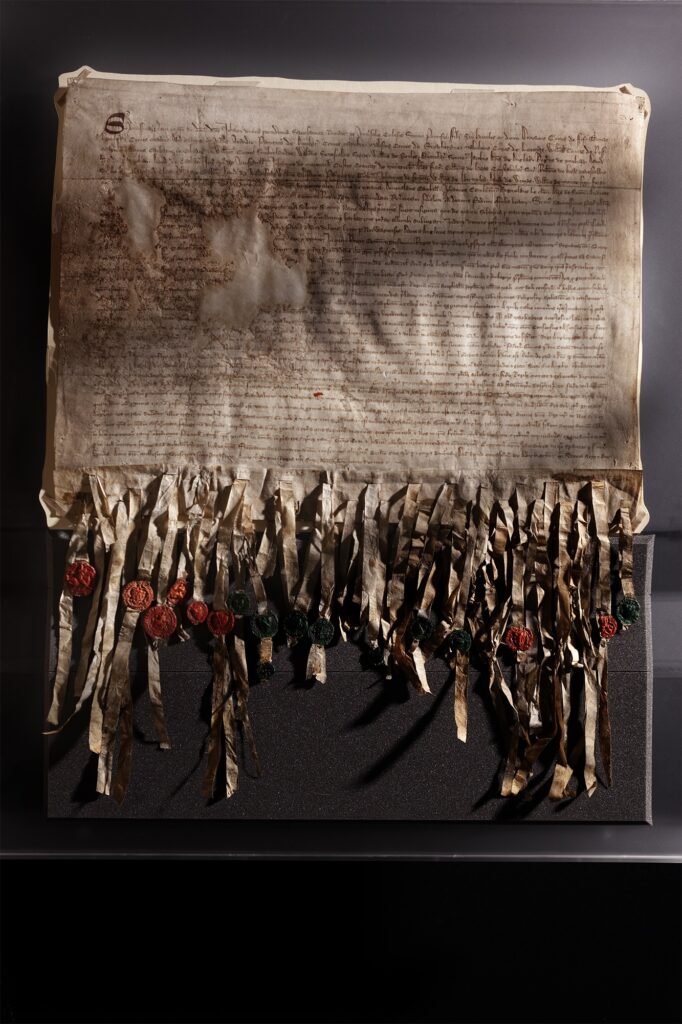THE DECLARATION of Arbroath will be displayed at the National Museum of Scotland this summer for the first time in 18 years.
The iconic and fragile 700-year-old document, which is cared for by National Records of Scotland, can only be displayed occasionally in order to ensure its long-term preservation.
The Declaration was initially due to be displayed in April 2020 to coincide with its 700th anniversary, but this had to be postponed due to the pandemic.
The famous document will be on show from June 3rd to July 2nd 2023 at the National Museum of Scotland on Chalmers Street.

The new summer date has been chosen to give as many people as possible the rare chance to see one of Scotland’s most important historical documents.
The Declaration of Arbroath is a letter dated 6 April 1320, written to Pope John XXII from the barons and freeholders of Scotland, on behalf of the Kingdom of Scotland.
The letter asked him to recognise Scotland’s independence and acknowledge Robert the Bruce as the country’s lawful king.
The Declaration was probably drafted at a meeting of the King and his council at Newbattle, then written up in the scriptorium of Arbroath Abbey.
Written in Latin, it was sealed by eight earls and about forty barons. It was authenticated by seals as documents at that time were not signed, but only 19 seals now remain.
Culture Secretary Angus Robertson said: “The Declaration of Arbroath is of great historic and cultural interest to Scots and people around the world of Scottish descent.
“The display of this iconic document will give people from across Scotland and further afield a wonderful opportunity to visit the museum and see this important piece of history.”
The Declaration was written during the long Wars of Independence with England in the late 13th and early 14th centuries.
Despite the Scots’ success at the Battle of Bannockburn, Robert I had not been recognised as king by either Edward II or the Pope, and had been excommunicated by the latter.
At this time, the Pope desired peace between England and Scotland, so both could help in a crusade to the Holy Land.
The Declaration sought to influence him by offering the possibility of support from the Scots for his long-desired crusade if they no longer had to fear English invasion.
After receiving the Declaration, the Pope urged reconciliation between the warring sides and a truce was agreed upon in 1323.
A peace treaty was signed between England and Scotland in March 1328 and the following year the Pope issued a papal bull permitting the crowning of a King of Scots.
The peace was short-lived, however, as the Second War of Independence broke out in 1332 and went on for twenty-five years.
Alice Blackwell, Senior Curator of Medieval Archaeology and History at National Museums Scotland said:
“We are delighted to have the opportunity to display the Declaration of Arbroath here at the National Museum of Scotland.
“It is a hugely significant document and a vital piece of Scotland’s history. We look forward to welcoming many visitors to enjoy the rare opportunity of seeing this iconic document.”
